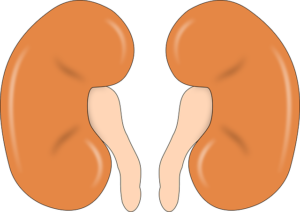
Photo by MostafaElTurkey36 on Pixabay
## Introduction
Cholesterol, a waxy substance produced by the liver, is essential for hormone production, vitamin D synthesis, and bile salt formation. While high cholesterol has traditionally been associated with older adults, there is a concerning trend of increasing cholesterol levels among young people. This rise in cholesterol poses significant health risks and necessitates early intervention and preventive measures. In this article, we will explore the factors contributing to the rising prevalence of high cholesterol in young individuals, the potential risks associated with it, and strategies for managing and mitigating these risks.
The Prevalence of High Cholesterol in Young Adults
In recent years, there has been a notable increase in cholesterol levels among young adults. While the prevalence of high cholesterol has been higher in older age groups, it is crucial to recognize that young individuals are not immune to this health issue. According to data from the Centers for Disease Control and Prevention (CDC), approximately 7% of children and teens between the ages of 6 and 19 already have high total cholesterol levels. Moreover, more than 12% of adults aged 20 and above also experience high cholesterol levels.
Factors Contributing to High Cholesterol in Young People
Several factors contribute to the rising trend of high cholesterol in young individuals. Unhealthy dietary habits, lack of regular exercise, smoking, and being overweight or obese are among the primary contributors. Processed and fast foods, which are often high in saturated fats and trans fats, have become increasingly prevalent in modern diets. This, coupled with sedentary lifestyles and limited physical activity, creates an environment conducive to cholesterol buildup in the body. Additionally, the consumption of sugary drinks and snacks rich in added sugars further compounds the risk of high cholesterol.
It is important to note that genetic factors also play a role in cholesterol levels. Familial hypercholesterolemia (FH), a genetic disorder characterized by high cholesterol levels, can significantly increase the risk of heart disease at a young age. Individuals with a family history of high cholesterol, heart attacks, or strokes are particularly susceptible to developing high cholesterol themselves.
Risks Associated with High Cholesterol in Young People
High cholesterol in young individuals can have serious consequences for their long-term health. It can lead to the accumulation of plaque in the arteries, a condition known as atherosclerosis. Over time, this plaque buildup narrows the arteries, restricts blood flow, and increases the risk of heart disease, heart attacks, strokes, and other cardiovascular issues. The damage caused by high levels of low-density lipoprotein (LDL) cholesterol, also known as “bad” cholesterol, to the arteries is cumulative and irreversible.
Early Detection and Prevention
Detecting high cholesterol at an early stage is crucial for effective management and prevention of complications. It is essential for young adults to undergo regular cholesterol screenings, even if they appear to be physically fit. The American Academy of Pediatrics recommends that children with a family history of high cholesterol, heart attacks, or strokes should be screened as early as 2 years old. For other children, the first cholesterol screening is typically recommended between the ages of 9 and 11, with follow-up screenings every 5 years.
In young adults, cholesterol screenings should occur approximately every 5 years starting from the age of 20. However, individuals with risk factors such as obesity or a family history of cardiovascular disease may require more frequent screenings. Early detection allows for timely intervention and the implementation of lifestyle modifications and, if necessary, medical treatments to manage cholesterol levels effectively.
Lifestyle Modifications to Manage High Cholesterol
Adopting a healthy lifestyle is crucial for managing high cholesterol in young individuals. A balanced diet that includes fruits, vegetables, whole grains, and lean proteins can help reduce cholesterol levels. Limiting the consumption of saturated fats, trans fats, and added sugars is also important. Regular physical activity, such as aerobic exercise, can have a positive impact on cholesterol levels by increasing high-density lipoprotein (HDL) cholesterol, also known as “good” cholesterol, and improving overall cardiovascular health.
Maintaining a healthy weight is another key factor in managing cholesterol levels. Losing excess weight through a combination of a healthy diet and regular exercise can significantly reduce cholesterol levels and improve overall heart health. Avoiding smoking and limiting alcohol consumption are additional lifestyle modifications that can positively impact cholesterol levels and reduce the risk of heart disease.
Treatment Options for High Cholesterol
In some cases, lifestyle modifications alone may not be sufficient to manage high cholesterol levels. In such instances, healthcare providers may recommend medication to help lower cholesterol. Statins, a class of drugs commonly prescribed for high cholesterol, work by reducing the production of cholesterol in the liver and increasing the liver’s ability to remove LDL cholesterol from the bloodstream. Other medications, such as bile acid sequestrants and cholesterol absorption inhibitors, may also be prescribed in specific cases.
It is important to note that medication should be used in conjunction with lifestyle modifications and under the guidance of a healthcare professional. Regular monitoring and follow-up visits are necessary to assess the effectiveness of the treatment plan and make any necessary adjustments.
The Importance of Early Intervention
The rising prevalence of high cholesterol in young individuals underscores the importance of early intervention and preventive measures. Waiting until middle age to address high cholesterol can have significant consequences, as damage to the arteries may already be extensive. By identifying and managing high cholesterol at a younger age, individuals can reduce their risk of developing heart disease and other related health issues later in life.
Public health experts, healthcare providers, parents, and policymakers should prioritize early cholesterol screenings, particularly during the teenage years. Implementing universal pediatric lipid screening and utilizing tools such as an “adolescent cholesterol passport” can help track cholesterol levels and initiate timely preventive treatments in the young population. By raising awareness and encouraging proactive measures, we can work towards reducing the burden of high cholesterol and promoting better heart health among young individuals.
Conclusion
The increasing prevalence of high cholesterol among young people demands attention and action. By understanding the factors contributing to this trend, embracing healthy lifestyle choices, and seeking early detection and intervention, young individuals can effectively manage and mitigate the risks associated with high cholesterol. Through a combination of proper nutrition, regular exercise, and, if necessary, medication, we can empower young individuals to take control of their heart health and lead healthier lives.
Remember, it is never too early to prioritize your heart health. By addressing high cholesterol at a young age, we can pave the way for a healthier future and reduce the burden of heart disease in generations to come.



